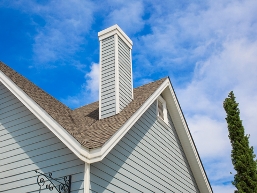Take Time for Chimney Maintenance
Posted September 24, 2015

Types of Chimneys
There are two types of chimneys that require specific maintenance to minimize the dangers in your home.
- Fireplace inserts (hearth stoves):
- Vent should be connected to the flue of the chimney. This will reduce creosote accumulation in the flue, and therefore, reduce the risk of fire.
- Factory-built metal chimneys:
- Designed for use with solid fuel heaters.
Do not use natural gas, fuel oil vents, well casing, stovepipe or other material in the chimney, as they cannot withstand the heat in the wood burner.
General Chimney Maintenance
Both metal and masonry chimneys require maintenance so that smoke and flue gases are ventilated properly. At the very least, you should have your chimney inspected annually before each heating season. In addition:
- Have your chimney cleaned on a regular basis to reduce creosote build-up. This accumulates in stovepipes and chimneys, and can ignite unless it is cleaned out. Avoid using chemical chimney cleaners, as they are not effective in removing creosote build-up.
- Make sure your masonry chimney has a flue liner in place to reduce the possibility that the masonry could absorb creosote.
- Replace cracked or damaged liners, as they will allow creosote to accumulate and heat to escape. This will increase your risk of fire.
- When hiring someone to reline your chimney, only allow the contractor to use a product that has been tested and listed by a nationally recognized testing laboratory. Also make sure that the contractor is experienced in replacing the type of liner needed for your unit, and that the local fire department approves the liner that you are choosing to use.
Safety First
Do not vent more than one heater or appliance into a single flue, as major complications can arise. If one fuel-burning appliance is connected to a flue and then you attach another appliance, such as a water heater, you are running the risk of the following problems:
- Heavy creosote accumulation
- Deterioration of the flue
- Creosote blocking the lower heater vent
- Carbon monoxide drifting into your home because the flue is not large enough to handle the extra appliance
If you would like more loss prevention tips for your home, contact us today!
This article is for informational purposes only and is not intended as professional advice.
